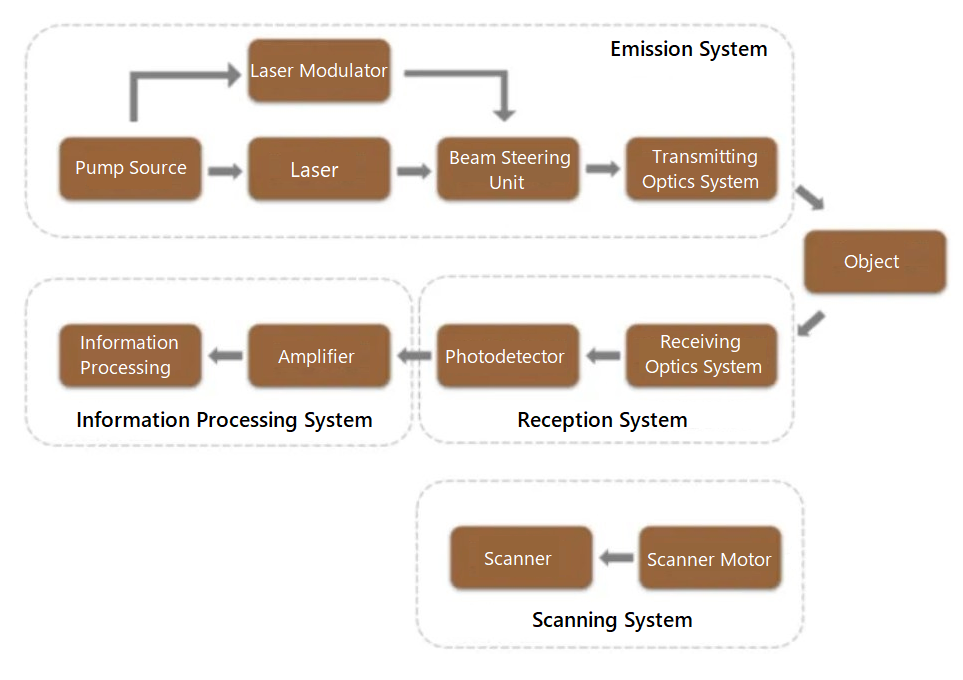What is LiDAR?
2024-04-30
Lidar, which everyone often talks about nowadays, is actually "optical radar", which is abbreviated from "Light Detection and Ranging".
It is an optical remote sensing technology that measures parameters such as the distance to the target by irradiating a beam of light, usually a pulsed laser, onto the target.
The full name of Radar is Radio Detection and Ranging.
In fact, the working principles of Lidar and Radar are similar. The difference between the two is that they emit different signals. Lidar uses pulse laser, while Radar uses radio waves. Compared with Radar, although Lidar is more expensive, it has better angles and accuracy.
The working principle of the lidar system is that the sensing layer continuously emits laser beams through lidar and receives the light pulses reflected back from the object. Calculate the time difference, phase difference, etc. between the two signals based on the known speed of light to determine the relative distance between the car and the object. Then measure the angle of the object through horizontal rotation scanning or phased scanning, and obtain height information by acquiring signals at different pitch angles.
After sensing the distance, angle and other information between the object and the object, it then uses software algorithms to do 3D modeling, and analyzes the laser signal to draw a three-dimensional point cloud map to achieve real-time environment perception and obstacle avoidance functions.
Specifically, lidar consists of four systems, namely laser emission, laser reception, information processing and scanning systems.
In the laser emission system, the excitation source periodically drives the laser to emit laser pulses. The laser modulator controls the direction and number of laser lines through the beam controller. Finally, the laser is emitted to the target object through the emission optical system.
The working principle of the laser receiving system is that through the receiving optical system, the photoelectric detector receives the laser reflected back from the target object and generates a receiving signal.
The information processing system receives the signal through amplification processing and digital-to-analog conversion, and calculates it through the information processing module to obtain the target surface morphology, physical properties and other characteristics, and finally establishes the object model.
The scanning system rotates at a stable speed to scan the plane and generates real-time floor plan information.








